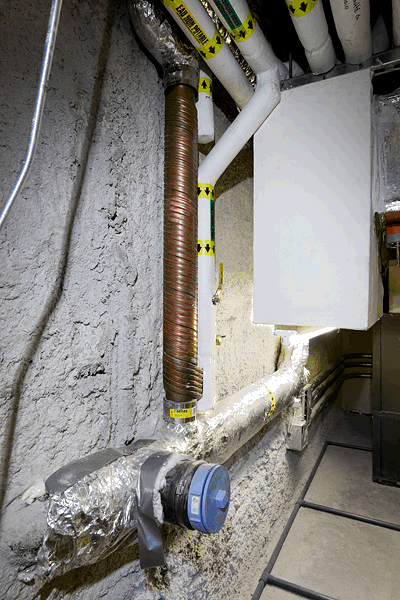Changes to Ontario Building Code SB-12
New changes in the Supplementary SB-12 “Energy Efficiency for Housing” section of the Ontario Building Code were announced on July 7, 2016. These changes, which come into effect January 1st, 2017 and include:
– New prescriptive compliance packages that provide minimum 15 per cent energy efficiency improvement over existing packages
– Drain water heat recovery units as a mandatory requirement for all prescriptive compliance packages
– Heat or energy recovery ventilators as a mandatory requirement in all packages in order to protect indoor air quality as homes get increasingly “air tight”
– Thermal U and effective RSI values along with nominal RSI values to provide added flexibility in the choice of different assembly structures e.g. basement wall and roofs
– Credits for reducing air leakage to encourage better energy conservation
– Revised air-leakage rates for the reference building to encourage testing and improved air tightness via
Some of the highlights, at least from our perspective, are the inclusion of heart recovery ventilators drain heat water recovery coils in all homes. In this post we will briefly introduce these two items.
Heat Recovery Ventilator
A Heat Recovery Ventilator takes the stale exhaust air of the house and runs it through a heat exchanger to pre-heat the clean, fresh incoming ventilation air (from outside). In this way the heat of the home is being preserved even though fresh air is being introduced.
This is a big factor in Passive House design because when a home is very air tight it is vital that fresh air is delivered in order to create a fresh, clean environment inside the house. It is good to see HRV’s incorporated as mandatory requirement because it can increase the energy efficiency of the home, while also maintaining indoor air quality.
Drain Water Heat Recovery Coil
The other highlight is the incorporation of drain heat water recovery coil (DWHR) in all homes. DWHR systems, as the name suggests allows for the recapture of heat from showers, faucets, and washing machines. Generally they are composed of a series of copper coils that are wrapped around a drainpipe to gather the heat.
Just like HRV’s, drain heat water recovery coils take the heat from the waste and use it to pre-heat the incoming cold fresh water before it heads over to be heated by the water heater. According the CMHC the benefits of this are reduced energy consumption, reduced energy costs, and a reduced environmental impact.
Conclusion
There is a wealth of more detailed information online: take a look… Let us know if you have any questions or comments.


